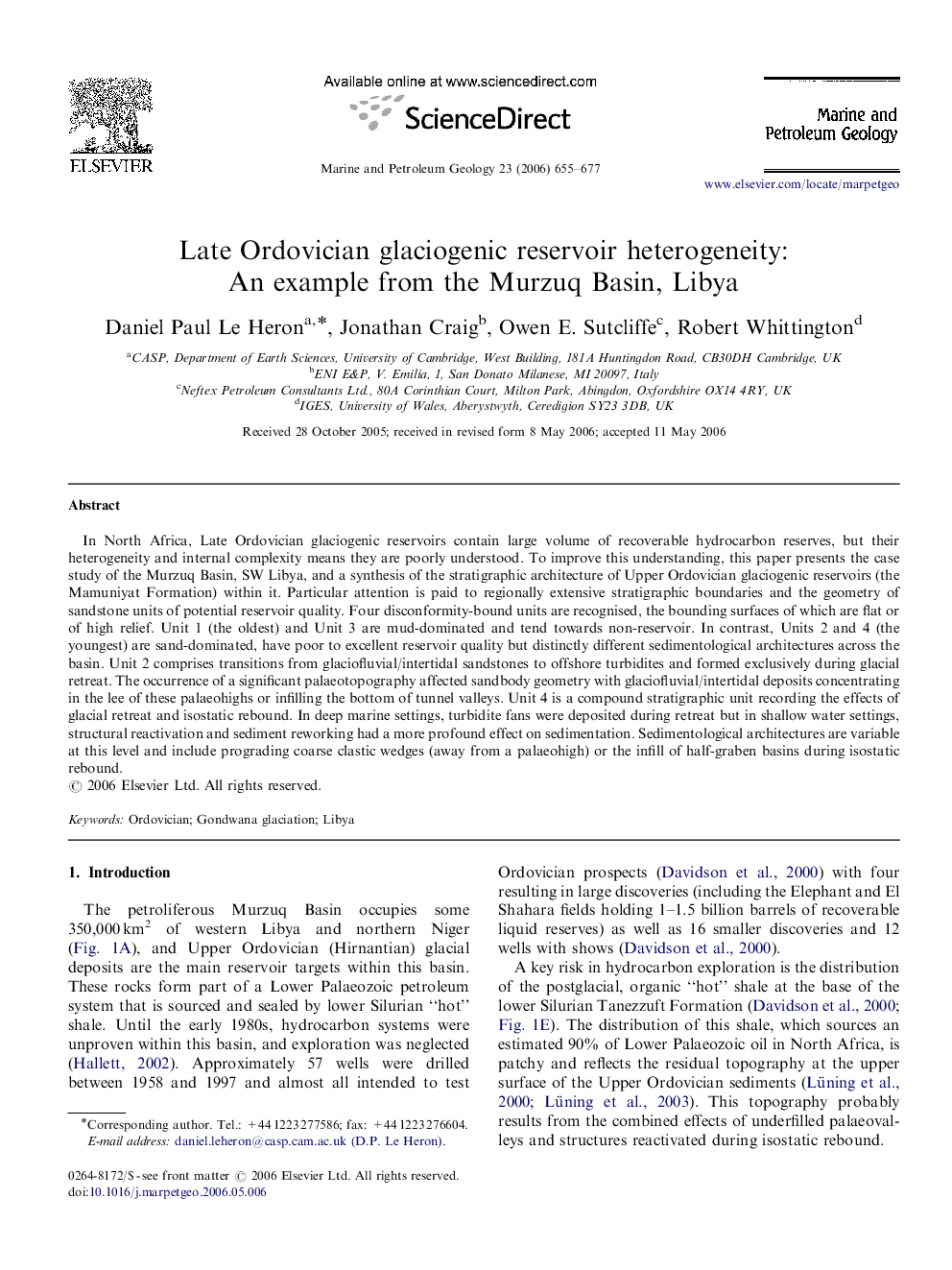| Article ID | Journal | Published Year | Pages | File Type |
|---|---|---|---|---|
| 4696752 | Marine and Petroleum Geology | 2006 | 23 Pages |
In North Africa, Late Ordovician glaciogenic reservoirs contain large volume of recoverable hydrocarbon reserves, but their heterogeneity and internal complexity means they are poorly understood. To improve this understanding, this paper presents the case study of the Murzuq Basin, SW Libya, and a synthesis of the stratigraphic architecture of Upper Ordovician glaciogenic reservoirs (the Mamuniyat Formation) within it. Particular attention is paid to regionally extensive stratigraphic boundaries and the geometry of sandstone units of potential reservoir quality. Four disconformity-bound units are recognised, the bounding surfaces of which are flat or of high relief. Unit 1 (the oldest) and Unit 3 are mud-dominated and tend towards non-reservoir. In contrast, Units 2 and 4 (the youngest) are sand-dominated, have poor to excellent reservoir quality but distinctly different sedimentological architectures across the basin. Unit 2 comprises transitions from glaciofluvial/intertidal sandstones to offshore turbidites and formed exclusively during glacial retreat. The occurrence of a significant palaeotopography affected sandbody geometry with glaciofluvial/intertidal deposits concentrating in the lee of these palaeohighs or infilling the bottom of tunnel valleys. Unit 4 is a compound stratigraphic unit recording the effects of glacial retreat and isostatic rebound. In deep marine settings, turbidite fans were deposited during retreat but in shallow water settings, structural reactivation and sediment reworking had a more profound effect on sedimentation. Sedimentological architectures are variable at this level and include prograding coarse clastic wedges (away from a palaeohigh) or the infill of half-graben basins during isostatic rebound.
